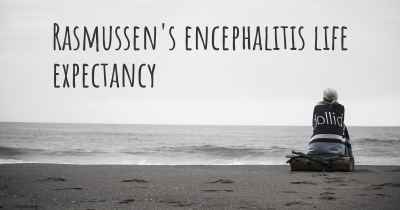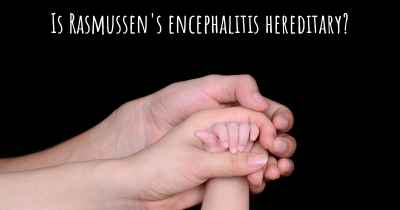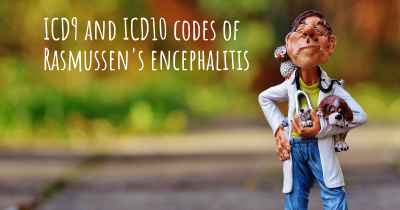What are the best treatments for Rasmussen's encephalitis?
See the best treatments for Rasmussen's encephalitis here

Treatments for Rasmussen's Encephalitis
Rasmussen's encephalitis is a rare and progressive neurological disorder that primarily affects children. It is characterized by inflammation and damage to one hemisphere of the brain, leading to seizures, cognitive decline, and motor deficits. While there is no known cure for Rasmussen's encephalitis, several treatment options can help manage symptoms and improve the quality of life for affected individuals.
1. Antiepileptic Medications
Antiepileptic medications are commonly prescribed to control seizures associated with Rasmussen's encephalitis. These medications work by stabilizing the electrical activity in the brain and reducing the frequency and severity of seizures. The choice of medication depends on the individual's specific needs and may involve a trial-and-error process to find the most effective drug and dosage.
2. Immunomodulatory Therapies
Immunomodulatory therapies aim to suppress the immune system's abnormal response, which is believed to contribute to the progression of Rasmussen's encephalitis. These treatments can help reduce inflammation and slow down the damage to the affected hemisphere. Commonly used immunomodulatory therapies include:
- Corticosteroids: High-dose corticosteroids, such as prednisone, are often prescribed to reduce inflammation and control seizures. They can be administered orally or intravenously.
- Intravenous Immunoglobulin (IVIG): IVIG involves infusions of concentrated antibodies obtained from healthy donors. It helps modulate the immune response and may provide temporary relief from symptoms.
- Plasma Exchange: Plasma exchange, also known as plasmapheresis, involves removing the patient's blood plasma and replacing it with donor plasma. This procedure aims to remove harmful antibodies and inflammatory factors from the bloodstream.
3. Epilepsy Surgery
In severe cases of Rasmussen's encephalitis that do not respond to medications or immunomodulatory therapies, epilepsy surgery may be considered. The most common surgical procedure for this condition is a hemispherectomy, where the affected hemisphere of the brain is either partially or completely removed. This surgery can help control seizures and prevent further damage to the unaffected hemisphere.
4. Supportive Therapies
Alongside medical interventions, various supportive therapies can significantly improve the quality of life for individuals with Rasmussen's encephalitis. These may include:
- Physical Therapy: Physical therapy can help manage motor deficits and improve mobility and strength.
- Occupational Therapy: Occupational therapy focuses on enhancing daily living skills, such as self-care, fine motor skills, and cognitive abilities.
- Speech Therapy: Speech therapy can assist in improving communication skills, language development, and swallowing difficulties.
- Psychological Support: Rasmussen's encephalitis can have a significant emotional impact on both the affected individual and their family. Psychological support, including counseling or support groups, can help cope with the challenges and provide guidance.
It is important to note that the effectiveness of treatments may vary among individuals, and a multidisciplinary approach involving neurologists, neurosurgeons, immunologists, and rehabilitation specialists is crucial for optimal management of Rasmussen's encephalitis.
He takes Imuran for RE. Gets IVIG every 3wks, with a push of solumedral.
That treat meant has seemed to help with the swelling the most ???
Posted Nov 2, 2017 by Charis 200








